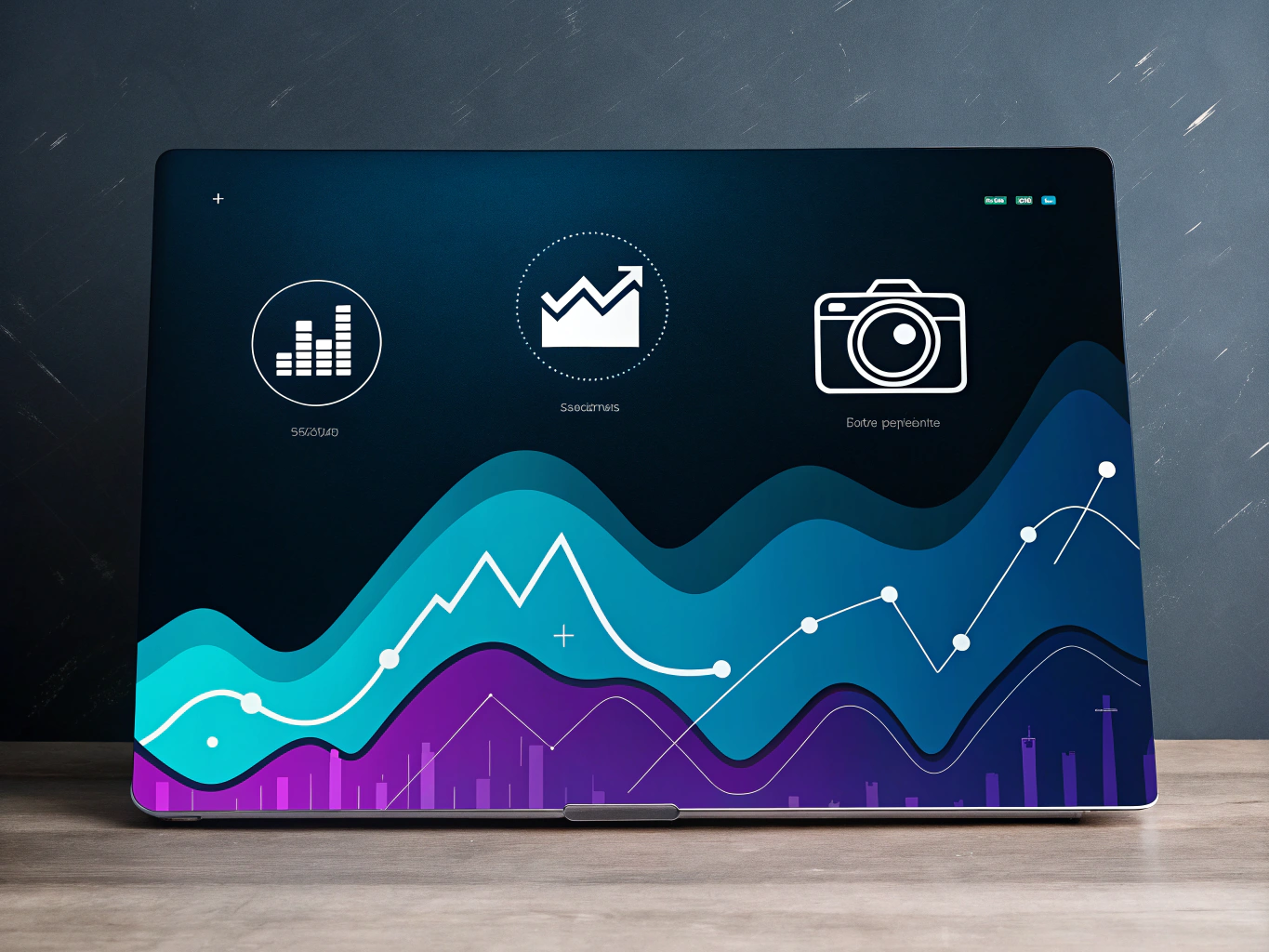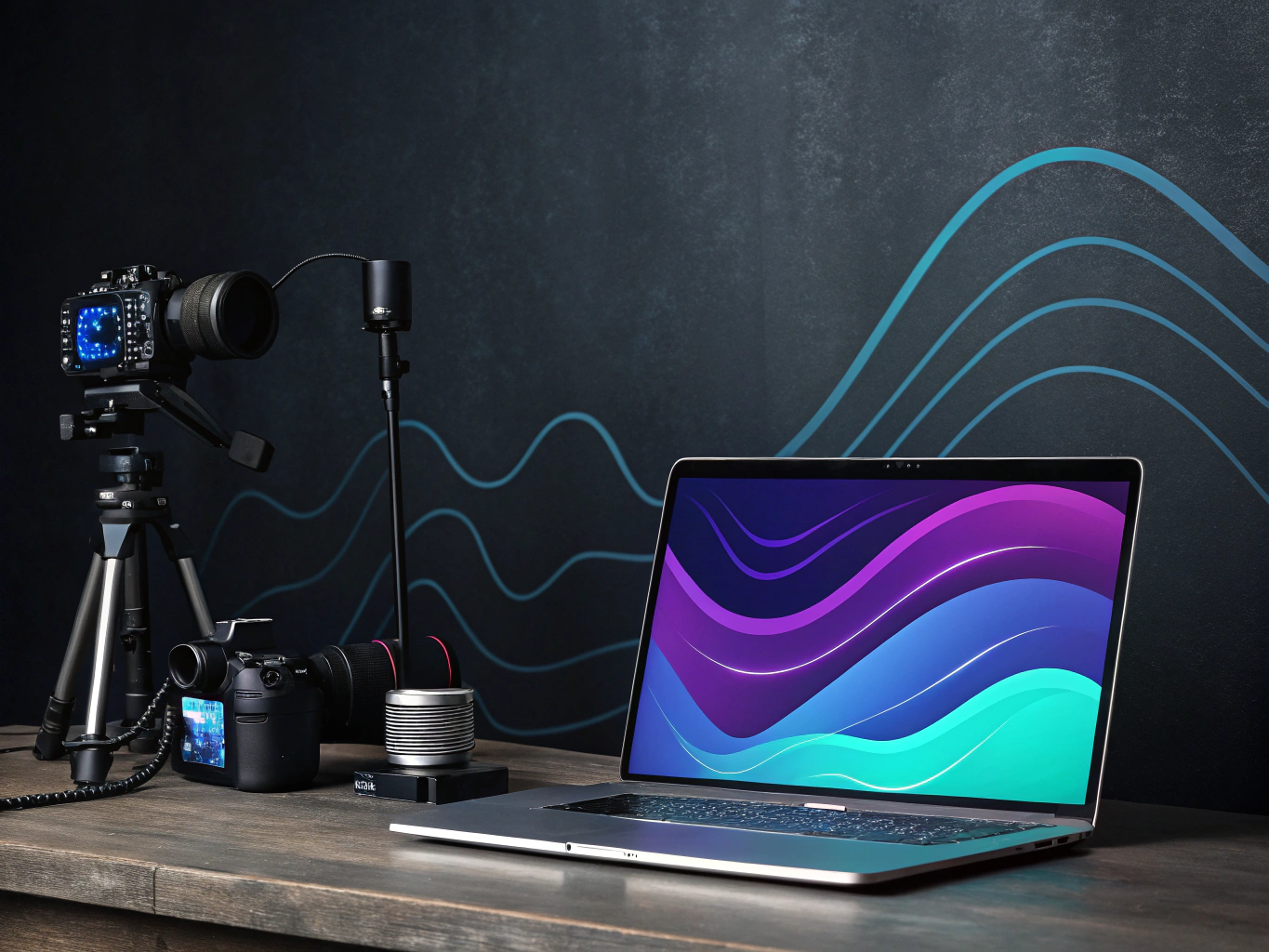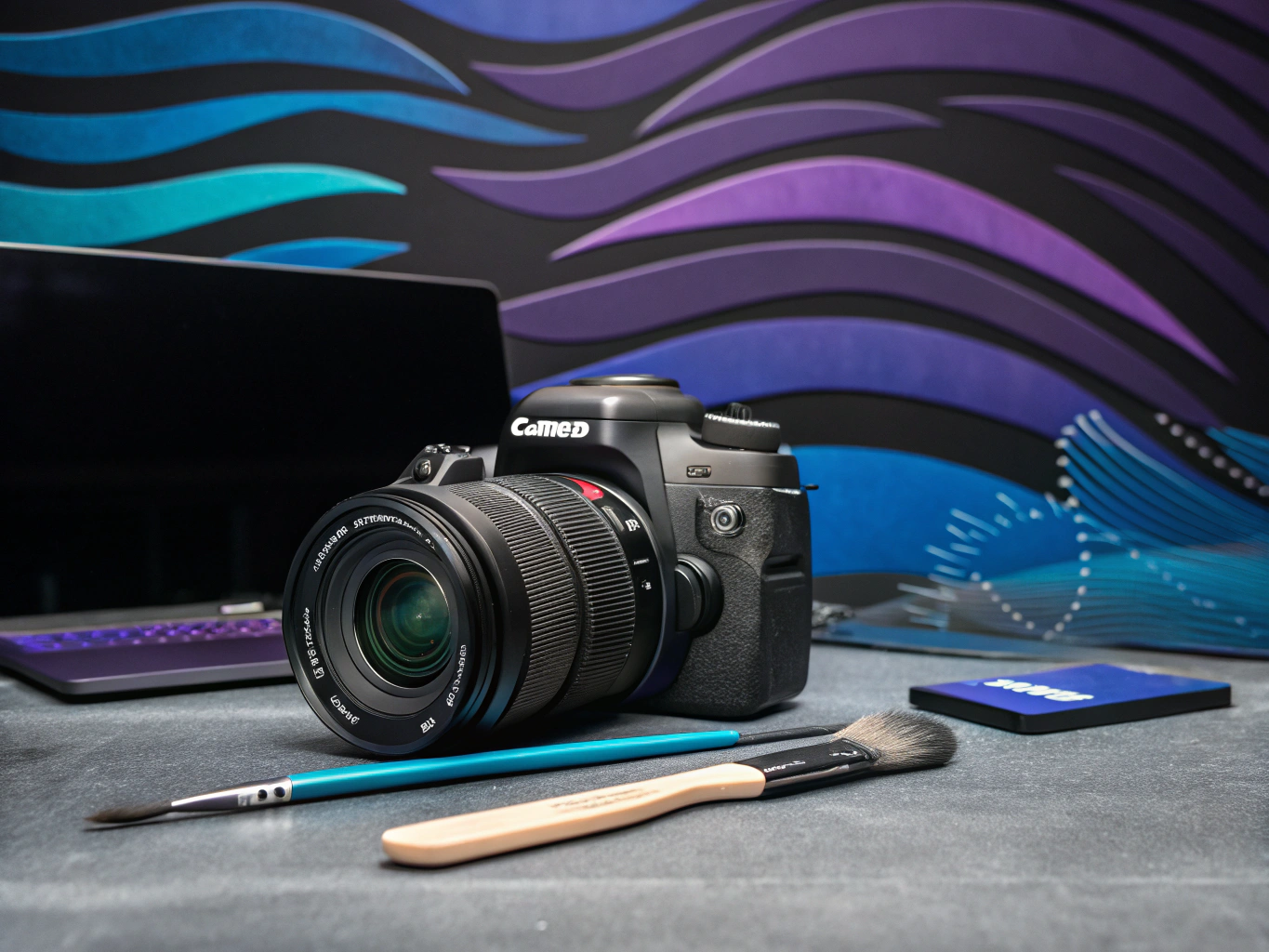The Hidden Power of Product Photography in E-commerce
Let’s be honest – we’ve all been guilty of judging a book by its cover. Or in the e-commerce world, judging a product by its photos. It’s human nature. And while we’re living in an age where AI can generate images of anything imaginable, there’s still something irreplaceable about capturing real products in their best light. For tips on enhancing images, check out how to edit product photos.

I’ve spent years helping brands optimize their visual content, and here’s what fascinates me: the psychology behind product photos isn’t just about making things look pretty. It’s about bridging the gap between digital window shopping and hitting that “Buy Now” button. Learn more about top product photography ideas to captivate your audience.
Why Product Photos Make or Break Your Website’s Success

Think about the last time you bought something online. Did you scroll through multiple photos? Zoom in to check the details? That’s because our brains process images 60,000 times faster than text. When we can’t physically touch a product, photos become our sensory substitute. Explore the difference between HEIC vs JPEG for your e-commerce images.
The data backs this up too. Brands I’ve worked with have seen conversion rate increases of 30-40% just by upgrading their product photography. One fashion retailer went from a 2.2% conversion rate to 3.1% simply by adding better detail shots of fabric textures. Discover how to create product photo backdrops that enhance your images.
The Trust Factor: Why Quality Matters More Than Ever
Here’s something wild: 93% of consumers consider visual appearance to be the key deciding factor in purchasing decisions. But it’s not just about making products look good – it’s about setting accurate expectations. Nothing kills customer trust faster than receiving a product that looks different from its photos. Consider investing in a product description writing service to complement your visuals.
I’ve seen countless brands struggle with return rates hovering around 30% because their product photos didn’t accurately represent colors or sizes. It’s like going on a date with someone who used a heavily filtered profile pic – nobody wins. For innovative approaches, consider an AI product photoshoot.
Essential Types of Product Photos Your Website Needs
Let’s break down the must-have shots that actually drive sales. Think of your product photos like a movie – you need different camera angles to tell the complete story. For engaging storytelling, explore images conversion rates for more insights.
The Hero Shot: Your Product’s Hollywood Moment
This is your money shot – the image that stops thumbs from scrolling. It’s usually a clean, front-facing view that shows your product in its best light. But here’s the trick: it needs to look professional without feeling sterile. I’ve seen too many brands go so clinical with their hero shots that they lose all personality. To understand the technicalities, learn how to rotate a photo correctly.
The Detail Shots: Getting Up Close and Personal
These are your product’s fingerprints – the unique details that set it apart. For a leather bag, show the grain texture. For electronics, highlight the ports and buttons. These shots answer the questions customers would ask if they were examining the product in person. If interested in design elements, compare PNG vs SVG for your graphics.
The Scale Shots: Context is Everything
Remember that viral “tiny hands” meme? That’s what happens when products lack proper scale reference. Show your product in use or next to common objects. It’s not just helpful – it prevents confusion and returns. For branding advice, explore building brand consistency with background removal.
The Technical Side: Equipment That Actually Matters

Let me bust a myth right now: you don’t need a $3000 camera setup to take great product photos. I’ve seen incredible results from brands using just smartphones and some clever lighting tricks. What matters more is understanding the basics. For a comprehensive strategy, consider an Etsy shop website to showcase your products.
Lighting: Your Best Friend (or Worst Enemy)
Natural light is fantastic, but it’s not always reliable. A basic lighting setup with two softboxes can transform your photos from “meh” to “wow.” And here’s a pro tip: diffused lighting is your friend. Harsh shadows are like that one relative who ruins every family photo – best avoided. For other format options, explore JPEG alternatives.
Backgrounds: Keep It Simple, Keep It Clean
White backgrounds aren’t just an Amazon requirement – they’re the industry standard for a reason. They focus attention on your product and create a professional look. But don’t feel limited – contextual backgrounds can work great for lifestyle shots, as long as they don’t steal the show. For social media insights, check out Instagram bio ideas.
The game is changing though. With AI tools entering the scene, we’re seeing new possibilities for background removal and enhancement. But remember – AI is like an intern: helpful but needs supervision. The fundamentals of good photography still matter.
Essential Product Photography Types for Maximum Conversion
Let’s be real – we’ve all abandoned shopping carts because product photos looked sketchy. And as someone who’s helped thousands of brands optimize their product imagery, I can tell you that nailing your product photography isn’t just about making things “look pretty” – it’s about building trust and closing sales. For automation insights, learn about Amazon automation.
The data backs this up: high-quality product photos can boost conversion rates by up to 40%. But here’s what most guides won’t tell you – it’s not just about having good photos, it’s about having the right types of photos in the right sequence.
The Complete Product Photo Portfolio
Think of your product photo portfolio like a first date – you need to make a great first impression (hero shot), show your best qualities (detail shots), and prove you’re not catfishing (scale photos). Here’s what a complete portfolio looks like:
- Hero shots that stop the scroll
- Detail shots that highlight craftsmanship
- Scale shots that show true size
- 360° views that build confidence
- Lifestyle shots that tell a story
How Many Photos Do You Actually Need?
I’ve analyzed thousands of product listings, and here’s the truth: the sweet spot is usually between 6-8 images. Any less and you’re leaving questions unanswered. Any more and you risk information overload. For creative approaches, explore product illustration strategies.
But it’s not one-size-fits-all. A simple t-shirt might need 4-5 shots, while a tech gadget with multiple features could justify 10-12. The key is thinking like your customer – what questions would they need answered before hitting “buy”?
Mastering Product Photography Techniques
 ai product photography“/>
ai product photography“/>Here’s where things get interesting. You don’t need a $5000 camera setup to take great product photos. I’ve seen brands crush it with just an iPhone and some clever lighting hacks.
The Three Pillars of Product Photography
1. Lighting: Natural light is your friend, but it needs to be controlled. A $20 diffuser can transform harsh sunlight into studio-quality lighting.
2. Composition: The rule of thirds isn’t just photography jargon – it’s literally how our brains process visual information. Use it.
3. Background: Keep it simple. White backgrounds aren’t boring, they’re professional. They also make your post-processing life way easier.
Dealing with Tricky Products
Some products are photography nightmares. Reflective surfaces? They’re like mirrors on steroids. Transparent items? They can disappear entirely in photos. Here’s how to handle the tough stuff:
- For reflective surfaces: Use polarizing filters or create a “light tent” with translucent fabric
- For transparent items: Back-lighting is your secret weapon
- For tiny details: Focus stacking techniques (even your smartphone can do this now)
The AI Revolution in Product Photography
Let’s talk about the elephant in the room – AI tools are changing the game. But they’re not replacing photographers; they’re supercharging them. At ProductScope AI, we’re seeing brands use AI to:
- Remove backgrounds instantly (goodbye, hours of Photoshop)
- Generate multiple product variations from a single photo
- Create lifestyle shots without expensive photo shoots
- Batch edit hundreds of photos with consistent style
But here’s the catch – AI isn’t magic. It’s more like having a really efficient assistant who occasionally puts their shoes on backwards. You need to know when to use it and when to stick with traditional methods. For deeper insights, consider Amazon automation for your e-commerce strategy.
The Future of Product Photography
We’re entering an era where the line between real and AI-generated product photos is getting blurry. But that’s not necessarily a bad thing. The goal isn’t to create fake images – it’s to help brands showcase their products more effectively and efficiently.
Think about it: what if you could shoot one perfect photo of your product and then use AI to show it in every color variation? Or create seasonal lifestyle shots without scheduling multiple photo shoots? That’s not science fiction – it’s happening right now.
Post-Processing: Where Good Photos Become Great

Post-processing isn’t cheating – it’s completing the story your camera started telling. But there’s a fine line between enhancement and deception. Here’s what works:
- Color correction to match real-life products
- Shadow enhancement for depth
- Spot removal for dust and scratches
- Background cleanup for consistency
And here’s what doesn’t:
- Over-smoothing textures
- Unrealistic color enhancement
- Removing product features or flaws
Remember: your product photos are promises to your customers. Make sure they’re promises you can keep.
Leveraging AI Tools in Product Photography
Let’s talk about the elephant in the room – AI product photography. It’s not quite the magical “press a button, get perfect photos” solution that some vendors promise, but it’s also not snake oil. The reality? It’s somewhere in between, and knowing how to use it effectively can be a game-changer for your product photos.
AI-Powered Background Removal and Enhancement
Remember when removing backgrounds meant painstaking hours with the pen tool in Photoshop? Those days are (mostly) behind us. Modern AI tools can strip backgrounds in seconds with scary accuracy. But here’s the catch – they’re not perfect with complex products like jewelry or translucent items. You’ll still need human eyes for quality control.
What’s really interesting is how AI is moving beyond simple background removal. Tools like ProductScope AI Studio can now generate entirely new backgrounds, add shadows that actually make sense, and even create lifestyle settings that look surprisingly natural. It’s like having a digital art director who works at the speed of light.
The Future of AI in Product Photography
Look, I’m not going to pretend AI will replace professional photographers anytime soon. Those perfectly lit, meticulously styled shots that make you want to lick your screen? Still very much a human art form. But AI is becoming an incredibly powerful assistant in the product photography workflow. To explore further, listen to ecommerce podcasts for industry trends.
Think of it this way: AI is like having an intern who’s incredibly fast at repetitive tasks but needs supervision for creative decisions. It can handle batch processing, basic enhancements, and even generate product variations – but you’ll want human oversight for the final aesthetic choices.
Creating a Comprehensive Product Photography Strategy
After spending way too much time in the trenches with both traditional and AI-powered product photography, I’ve learned that success comes down to having a clear strategy. It’s not about choosing between human photographers or AI tools – it’s about knowing when to use each.
The Smart Approach to Product Photos for Websites
Start by auditing your current visual content. Are your product photos telling the story you want to tell? Are they consistent across your catalog? Do they load quickly without sacrificing quality? These questions matter more than whatever shiny new tool or technique is trending on Twitter.
For most brands, I recommend a hybrid approach:
- Use professional photography for your hero products and key marketing assets
- Leverage AI tools for bulk processing, variations, and quick updates
- Maintain a consistent style guide that works across both human and AI-generated content
Balancing Quality, Speed, and Budget
Here’s the truth about product photography that nobody likes to admit: perfect is the enemy of good enough. While those ultra-premium brands can spend days shooting a single product, most of us need to find the sweet spot between quality and efficiency.
The good news? Today’s consumers are surprisingly forgiving of minor imperfections if your photos are authentic and informative. They’d rather see honest representations of your products than over-processed perfection that sets unrealistic expectations.
Final Thoughts: The Future of Product Photography
We’re entering an exciting era where the boundaries between traditional photography and AI-generated imagery are blurring. The winners won’t be those who exclusively choose one over the other, but those who learn to orchestrate both effectively.
My advice? Start small, experiment often, and always keep your customer’s perspective in mind. Whether you’re using a professional photographer, AI tools, or (most likely) both, focus on creating images that help customers make confident buying decisions.
And remember – while AI can help automate and enhance your product photography workflow, it’s still your brand’s unique vision and understanding of your customers that will make your products stand out in an increasingly crowded digital marketplace.
The best product photos for your website aren’t necessarily the most technically perfect ones – they’re the ones that connect with your customers and drive sales. Sometimes that means embracing a bit of imperfection in the pursuit of authenticity.
Now get out there and start creating some amazing product photos. Your future customers are waiting to be wowed.
👉👉 Create Photos, Videos & Optimized Content in minutes 👈👈
Related Articles:
- 12 Tips on How to Edit Product Photos Effectively to Drive Sales
- HEIC vs JPEG: Optimizing Image Quality for Better Online Sales
- Create Perfect Product Photo Backdrop with These Hacks
Frequently Asked Questions
How to take product photos for a website?
To take effective product photos for a website, start by using a high-quality camera or smartphone with good resolution. Ensure there’s ample lighting, preferably natural light, or use a lightbox to eliminate shadows. Use a clean, clutter-free background to keep the focus on the product and consider using a tripod for stability to avoid blurry images.
How to create product images for a website?
Creating product images for a website involves not only capturing the photo but also editing it to enhance its appeal. Use photo editing software to adjust brightness, contrast, and colors, and to crop the image appropriately. Consider adding multiple views of the product, including close-ups of important features, to provide a complete visual experience for potential customers.
Can I use product images on my website?
Yes, you can use product images on your website, especially if they are original photos that you or your business have taken. If you are using images sourced from manufacturers or other external sources, ensure you have the rights or permissions to use them to avoid any copyright issues.
What size should a product image be for a website?
The ideal size for a product image on a website typically ranges from 800×800 pixels to 1200×1200 pixels. This size ensures that the image is large enough to be clear and detailed but not so large that it slows down the webpage loading speed. Always optimize images for web use to maintain quality while reducing file size.
What is the best way to take product photos?
The best way to take product photos is to prepare a well-lit environment and use a good camera or smartphone with a high resolution. A consistent setup with a tripod, a plain background, and diffused lighting will help achieve professional-looking images. Experiment with different angles and close-ups to capture the product’s unique features, ensuring the photos accurately represent what you are selling.
About the Author
Vijay Jacob is the founder and chief contributing writer for ProductScope AI focused on storytelling in AI and tech. You can follow him on X and LinkedIn, and ProductScope AI on X and on LinkedIn.
We’re also building a powerful AI Studio for Brands & Creators to sell smarter and faster with AI. With PS Studio you can generate AI Images, AI Videos, Blog Post Generator and Automate repeat writing with AI Agents that can produce content in your voice and tone all in one place. If you sell on Amazon you can even optimize your Amazon Product Listings or get unique customer insights with PS Optimize.
🎁 Limited time Bonus: I put together an exclusive welcome gift called the “Formula,” which includes all of my free checklists (from SEO to Image Design to content creation at scale), including the top AI agents, and ways to scale your brand & content strategy today. Sign up free to get 200 PS Studio credits on us, and as a bonus, you will receive the “formula” via email as a thank you for your time.
